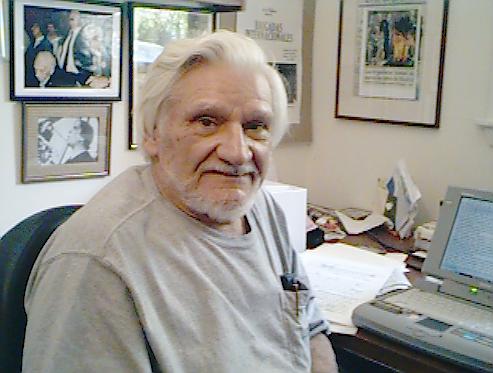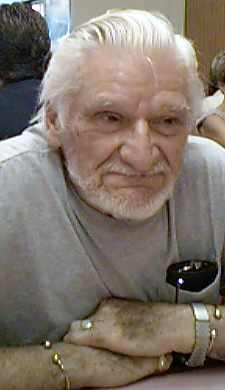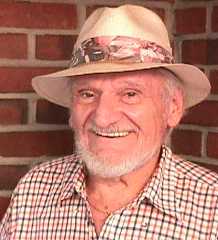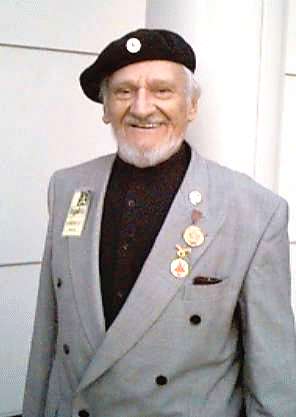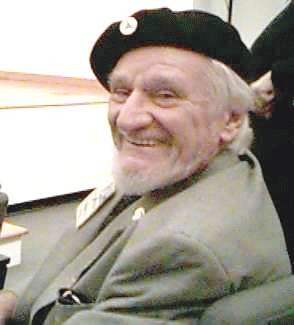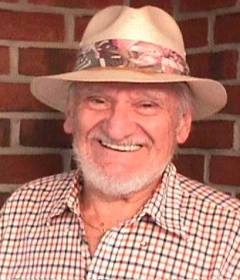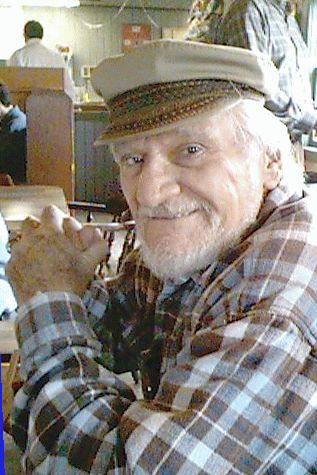|
Meeting with GeorgeLiving Anarchism: The Story of George SossenkoI think back to the time I spent with George and I keep on telling myself, “it was just a dream; it was just a dream.” It wasn’t. I met George Sossenko, 88, at an anarchist workshop at the United States Social Forum in Atlanta this past June [2007]. I found his phone number and was able to track him down to talk to him before I left town. He and his wife Birdie picked me up for lunch and I spent the next few hours talking with him about the Spanish Civil War, anarchism and revolution. When George first met me, he was sporting a red and black flag button with the acronyms CNT and AIT and the word antifascista emblazoned in bold black letters. He told me in a slight French accent, “I am a worshiper of logic.” I soon found out that this was certainly the case. He told me that he’s a “fourth generation atheist – God has never entered my house.” I asked him to tell me about the Spanish Civil War. He and his wife Birdie told me that if the revolution in Spain had been successful, both the Holocaust and the Second World War would never have occurred. History would have been dramatically different. When we all sat down for lunch, he pulled out a leather-bound binder and showed me a dozen articles and a few pictures. One picture was of him and three of his comrades in Aragon, Spain, all of them wearing the signature Durruti Column cap. “I was 16 years old in this picture; I was just a little boy.” George joined the International Brigades in his home country of France at the age of 16. He went to Spain by way of Andorra and fought in Barcelona, near Madrid and in Aragon. He soon joined both the Durruti Column and the CNT (the anarchist union federation Confederacion Nacional del Trabajo). I asked George how he initially became attracted to anarchism and he told me it was because of capitalism – the fact that in any day one person can make $10,000 and another only $2. I asked him the same question again later and he said, “I already told you” then paused and asked, “Do you know who Nestor Makhno is?” I nodded. George told me of the anarchist revolution in Ukraine in 1918 where Makhno helped mobilize Ukrainian peasants and workers and bravely fought off counterrevolutionary White armies, authoritarian Communists and Ukrainian nationalists, all the while defending a communal way of life built on ideas of mutual aid and cooperation. George also described Makhno’s flight to Paris where he eventually died (when George was just a teenager). George’s friend told him about Makhno after the revolutionary’s death and both decided to attend his memorial ceremony. George met Alexander Berkman there and very soon after became immensely interested in anarchism, in both thought and practice. That interest has never waned over the years; it’s only intensified. Our talk was filled with sadness and frustration. George spoke of Guernica, the betrayal by the West during the revolution, how the Russians “liberated” Makhno’s family in France from the fascists, only to throw them in the gulags in Russia. He told me about people’s fascination with and attraction to communism when he was younger. But as a “worshiper of logic” he was able to see through the commisarocracy and bureaucracy that developed in authoritarian communist systems. He also spoke of the youth. He was very inspired and excited by the dedication, seriousness and commitment of younger people at the US Social Forum. But he also spoke of the apathy expressed by many young people today – very similar to a form of disinformation he witnessed as fascism spread throughout Europe in the 30s and 40s. He told me that when he was younger than me students in France would have fistfights and battles in the streets and at universities over politics. It was a war in the most literal sense. I thought maybe he was hinting at and hoping for student and youth militancy and greater organization in this country. Living anarchism When George told me about Spain when he was there, a society he witnessed, experienced, felt, lived, I hung on every word that escaped his mouth. The only connection I have with anarchism, as experienced and lived at its height in Spain, has been in books. Hearing from someone who lived in an anarchist society, fought for it and believes that it can happen again was a surreal experience. He described a society without police or courts, prisons, priests, hierarchy, government, capitalism, a society without bosses and masters. He told me how happy people were to live their lives – to really live their lives. This was a society, he said, where “the union was in power”. This society where the union (in Spain’s case the CNT) was in power had a lasting effect on George. He was at the US Social Forum every day starting at 8 a.m. where he spent time volunteering at the Veterans for Peace booth, frequented workshops and discussions, and found time to help with translating at the forum (he speaks seven or eight languages). He and his wife often have meetings together because they’re “too involved” and sometimes need a little rest. Age has taken a hold of George Sossenko but he still seems young, active and very much alive. I remember once looking at pictures of Lenin taken before, during and after the Bolshevik Revolution. It looked like he aged 20 years in the span of five. For Lenin, Revolution was a tiresome and stressful affair; by no means liberating. The Russian Revolution killed him – stress killed him. Lenin breathed death into the people of Russia and Eastern Europe and in time his breath caught up with him. George had a vastly different experience with the revolution in Spain. Through George’s eyes, I could see that the revolution in Spain wasn’t just a single spectacular historical event. It wasn’t something that rose and fell, lived and abruptly died. I can hear the revolution in his voice and see it in his eyes. The revolution isn’t something constrained by time and space. It didn’t start in Spain and it didn’t end there either. I felt it in Atlanta when I was there. I feel it now. Brendan Maslauskas Dunn is a member of the Olympia chapter of Students for a Democratic Society and is a delegate for CNT’s sister union – the IWW. He can be reached at maslauskas@riseup.net. You can read Brendan’s full report of the US Social Forum at http://www.tacomasds.org. Author: Brendan Maslauskas Dunn
From:
Now, read George's exciting book: |
